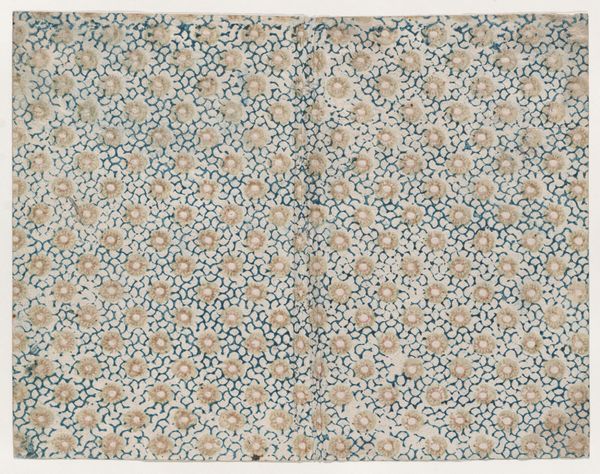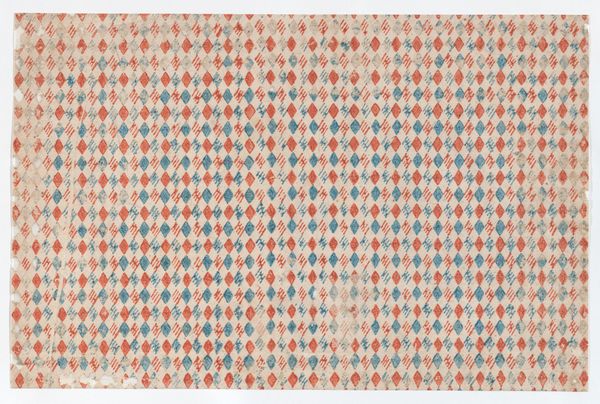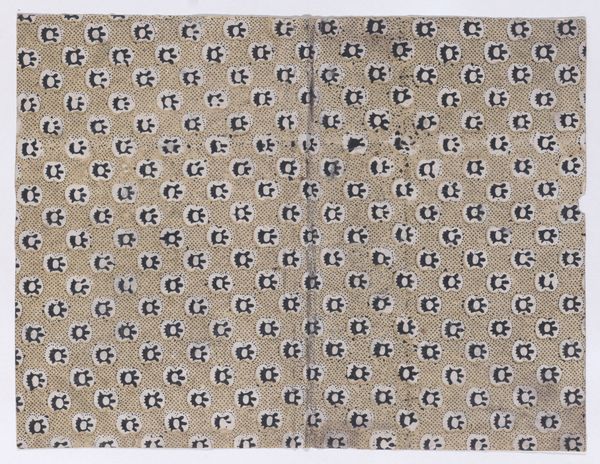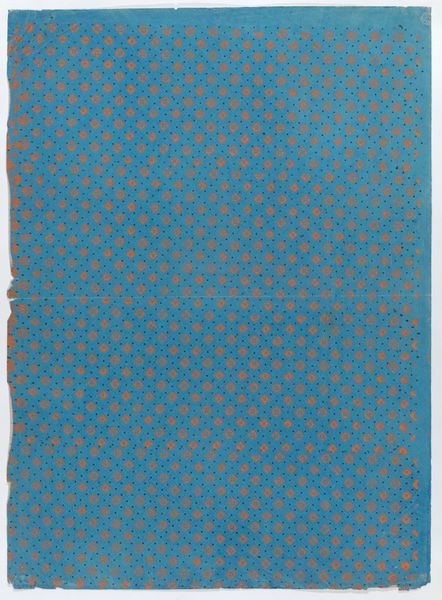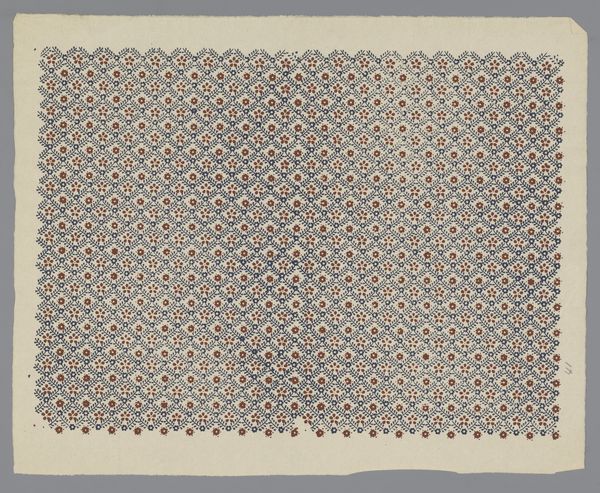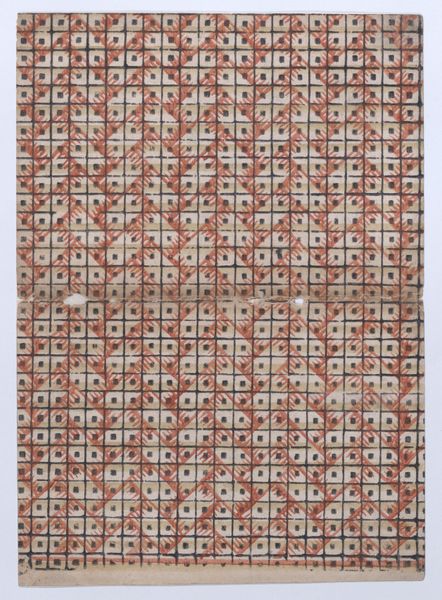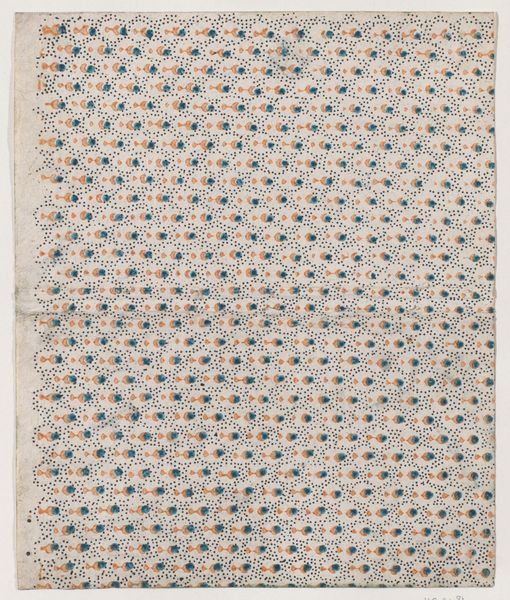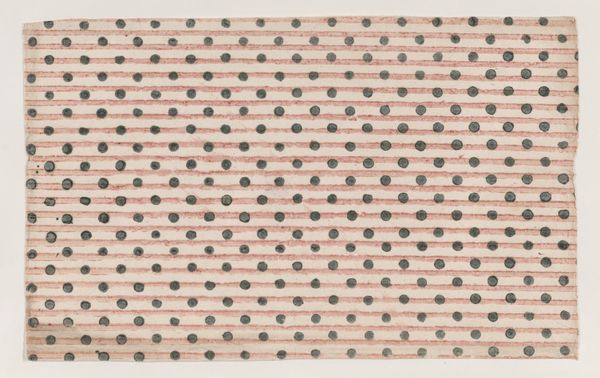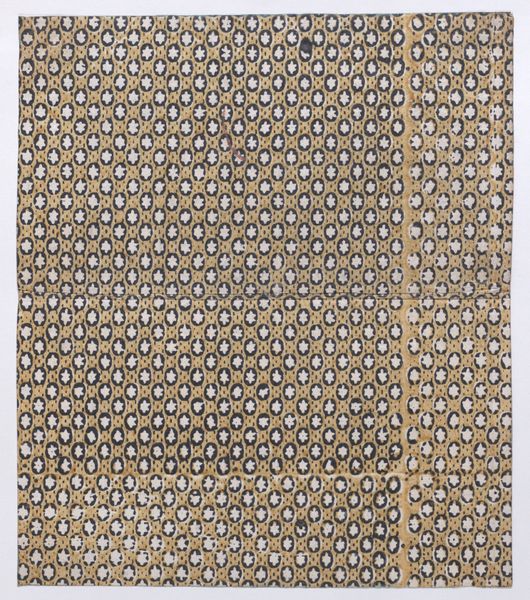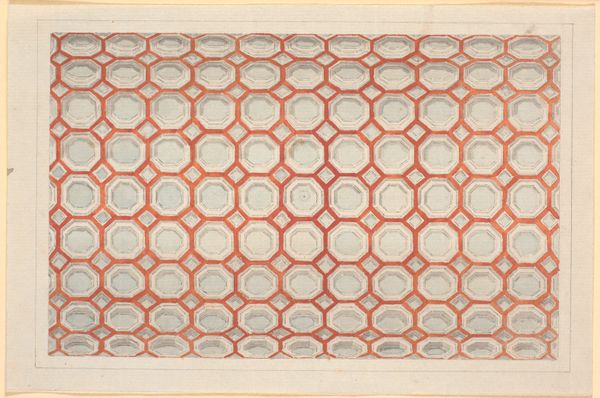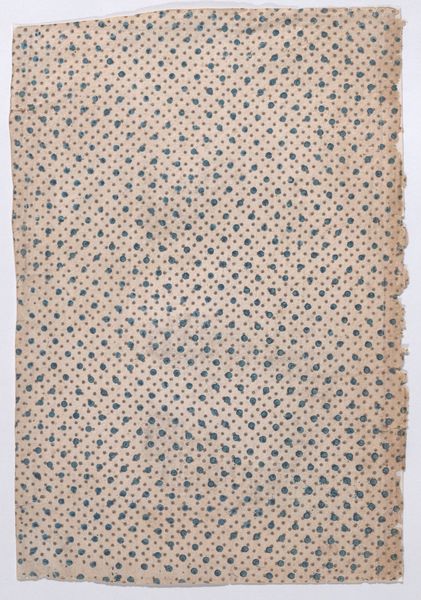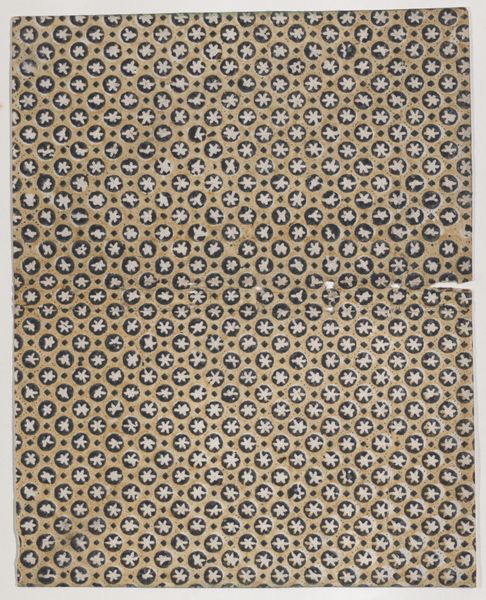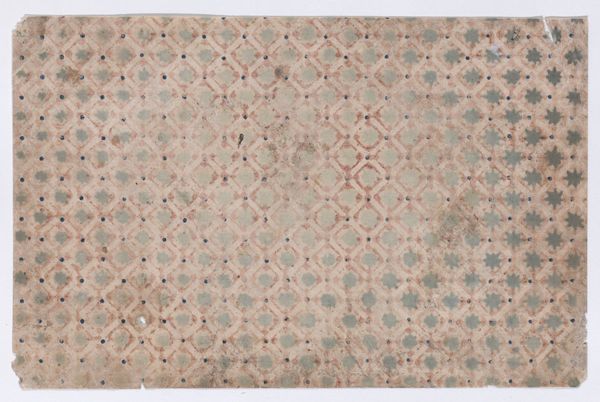
Book cover with overall pattern of three lines within circles 1800 - 1900
0:00
0:00
# print
#
geometric pattern
#
organic pattern
#
geometric
Dimensions: Sheet: 6 15/16 × 8 1/4 in. (17.7 × 20.9 cm)
Copyright: Public Domain
Curator: Look at this fascinating piece! It's a book cover, likely from sometime in the 1800s, though its maker remains anonymous. It’s currently held at the Metropolitan Museum of Art. The pattern just dances before my eyes! Editor: My first impression? Controlled chaos. The geometric pattern attempts order, but the slightly uneven print and visible wear around the edges gives it a human touch, making the cover seem simultaneously comforting and agitated. What material are we looking at? Curator: The material is not specified precisely, but, judging from what we know, this piece would have been done using drawing and printing on what most closely resembles a textile base. Editor: The recurring motif - these sets of three short lines tucked within circles reminds me of seeds or cells multiplying endlessly, suggesting ideas of reproduction and growth contained within structured social spaces. The fact that it adorns a book cover begs us to consider themes of access to knowledge during its era, too, right? Who had access to literature, to education, to this type of pattern? Curator: Absolutely! The pattern almost gives a tactile depth to the book cover and might be said to reflect on the era it originates from. It may have been inspired by global design movements and might be an element to question the meaning behind such visual echoes and design ownership. It is this anonymous maker interpreting a feeling... a meaning. Editor: I agree, and anonymity always makes me consider questions of class and access to authorship. Did this artist intentionally obscure their identity, or were they simply not deemed important enough to be recorded? Also, looking at this rich blue contrasted with the paler seed shapes within each circle… How might color inform the meanings of freedom and restriction, blossoming, growth, decay, and loss? Curator: These visual codes in the pattern seem also like subtle echoes of larger aesthetic movements—perhaps Art Nouveau trickling in—a reflection of the book as a vessel both carrying ideas and displaying an inherent beauty on its cover. Editor: In the end, whether intentional or not, these repeating designs tell a rich and complicated story through geometry and color, a coded language that links material, maker, and meaning within this book cover's repeating designs. Curator: Right. Sometimes it feels like that’s all you can ask from art, doesn't it? To provoke that initial spark.
Comments
No comments
Be the first to comment and join the conversation on the ultimate creative platform.
